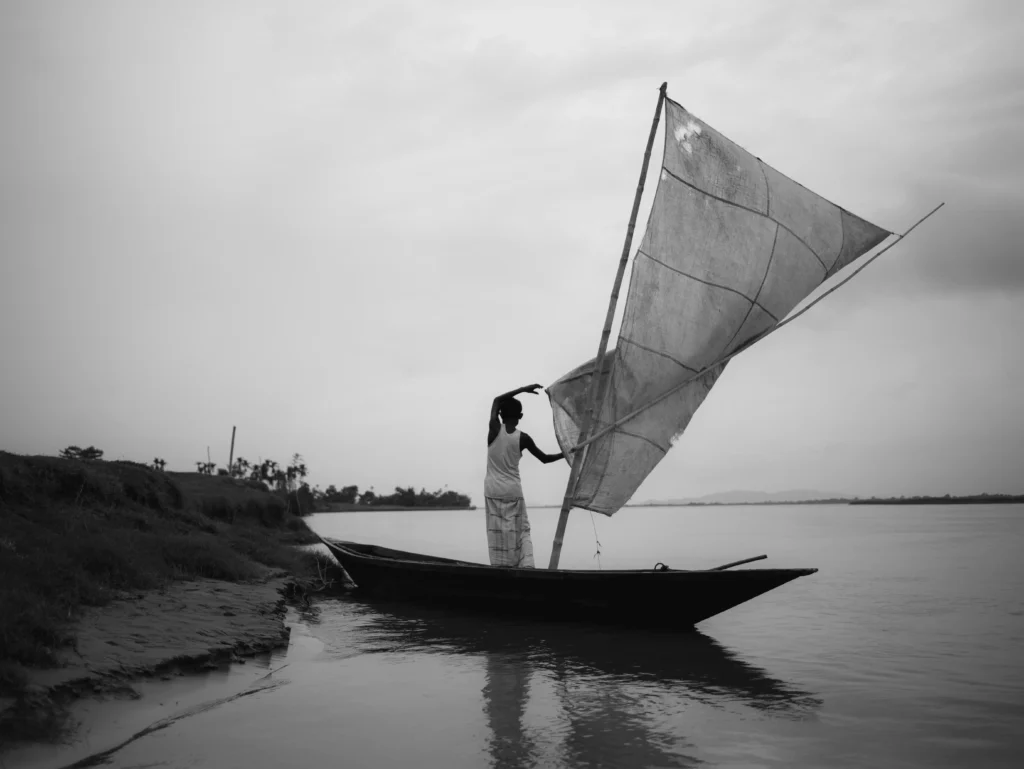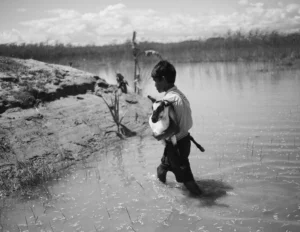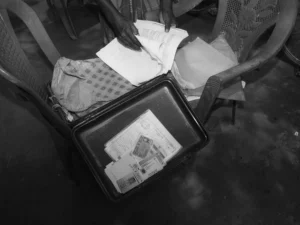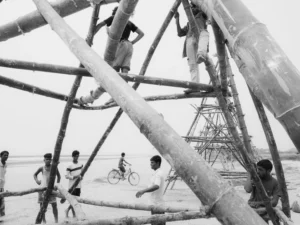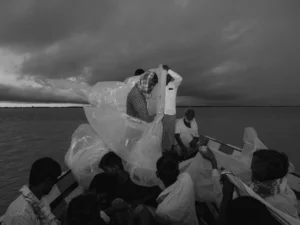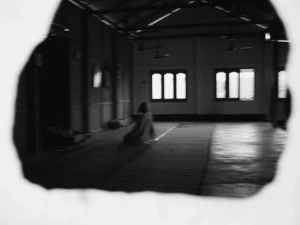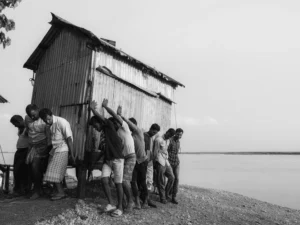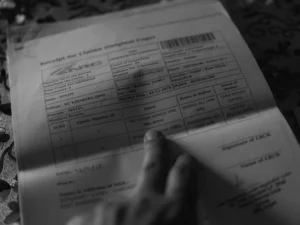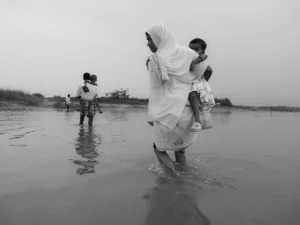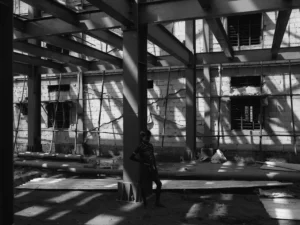In 1971, when Bangladesh declared independence, a number of Bengali people – both Hindus and Muslims – migrated to the northeastern Indian state of Assam to sidestep the risk of persecution in the future. But over the past several decades, Bengali Muslims in Assam – the Miya people – have suffered from a complicated confluence of politics and climate. The political far-right have a pattern of targeting Bengali Muslims in an effort to win the vote of the Hindu community. India’s National Register of Citizens, or NRC, is meant to list all Indian citizens and ostensibly aims to curb illegal immigration. Its most recent publication in 2019, however, excluded 19,06,657 people, largely Bengali Muslims. Five years later, these millions of people continue to exist in legal limbo, unrecognised officially by the state. Assam’s climate and geography add another level of precarity: flooding and erosion of the Brahmaputra River has become increasingly unpredictable and extreme due to climate change. This ecological devastation adds another obstacle to Bengali Muslims’ ability to establish roots in this agricultural region, and additionally fuels the border police with the political justification to variously deride members of this community as ‘doubtful voters’ or as climate refugees lacking land to call their own. Photographer Zishaan A Latif has spent several years making numerous trips to Assam, documenting the Miya community’s existence, and their ongoing struggle to navigate these cycles of environmental and political displacement.
Do you want to submit a story?
We believe that in order to provoke a paradigm shift, people have to tap into their sense of empathy and justice.
